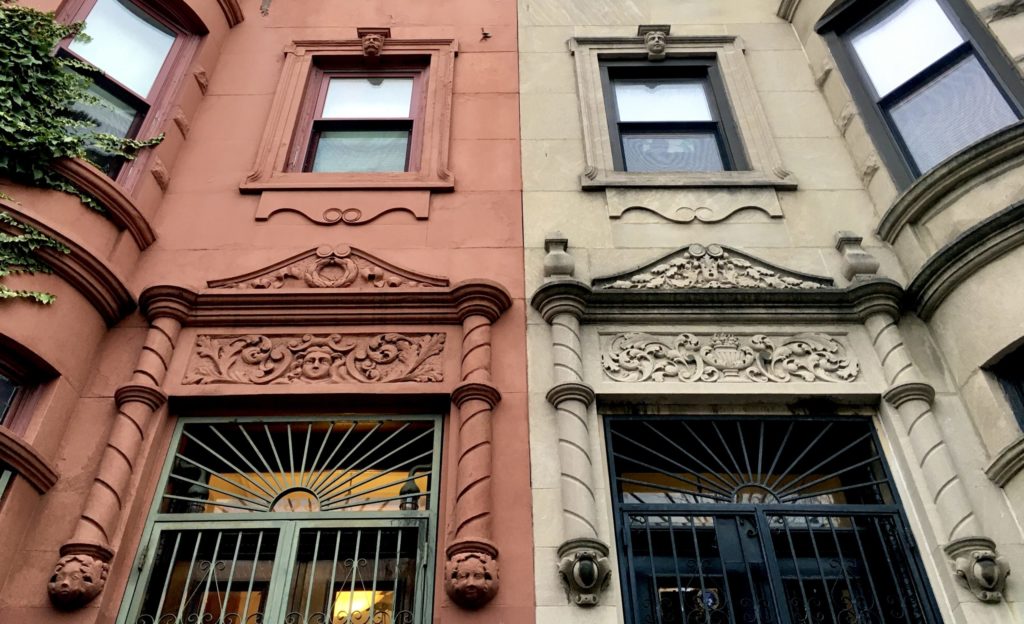Here are 14 photos of Central Park Slope that will make you smile

Faces stare down from the facades of Center Slope homes. Photo: Lore Croghan/Brooklyn Eagle
Eye on Real Estate: I took 72 photos of Central Park Slope on Saturday.
I would have taken more. But sunset comes too soon in the wintertime, and historic building facades look prettiest to me when the light of day illuminates them.
Brownstones seem to stretch to infinity when you stand on the sidewalk and try to see to the end of these Central Park Slope blocks.
